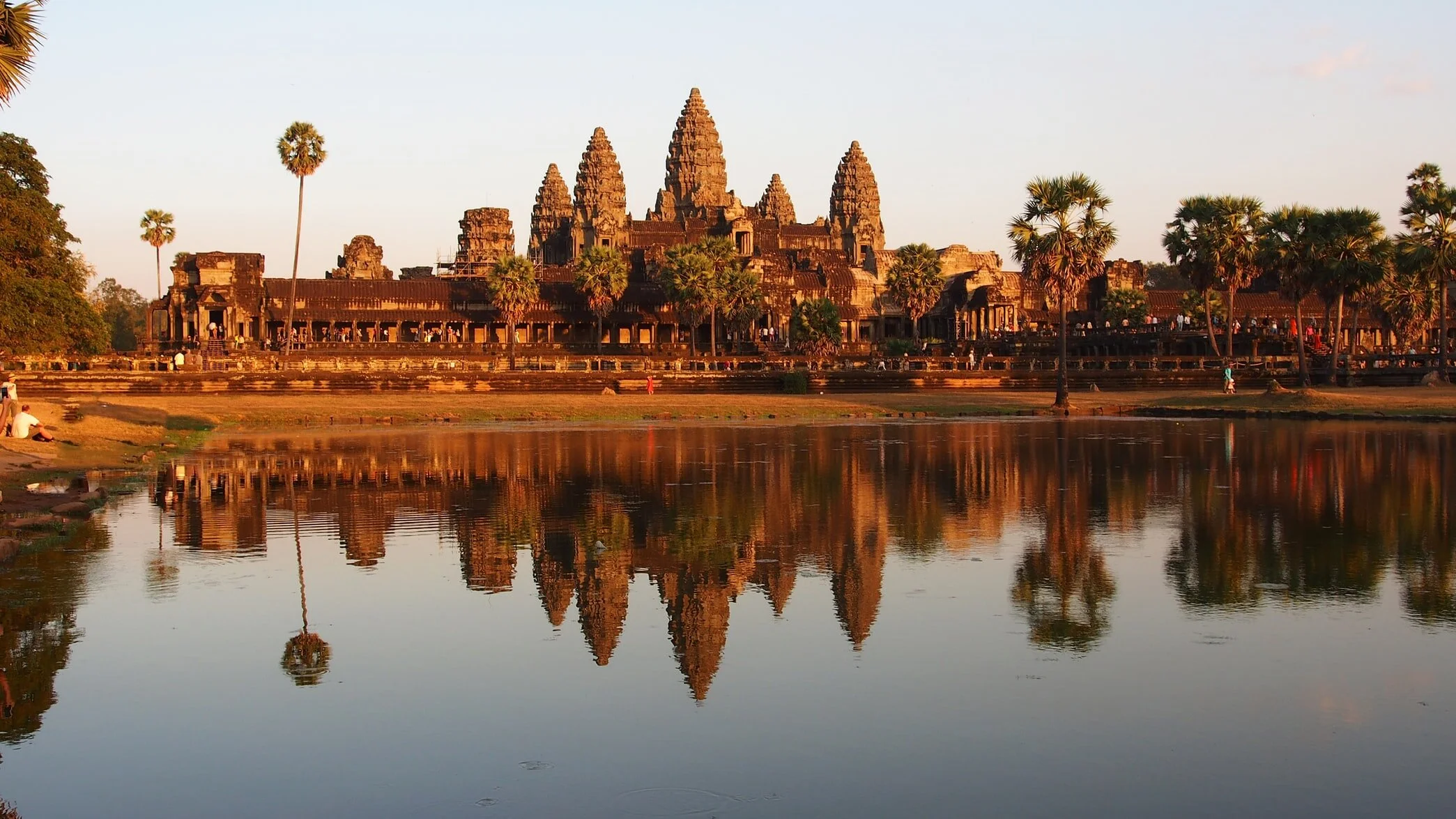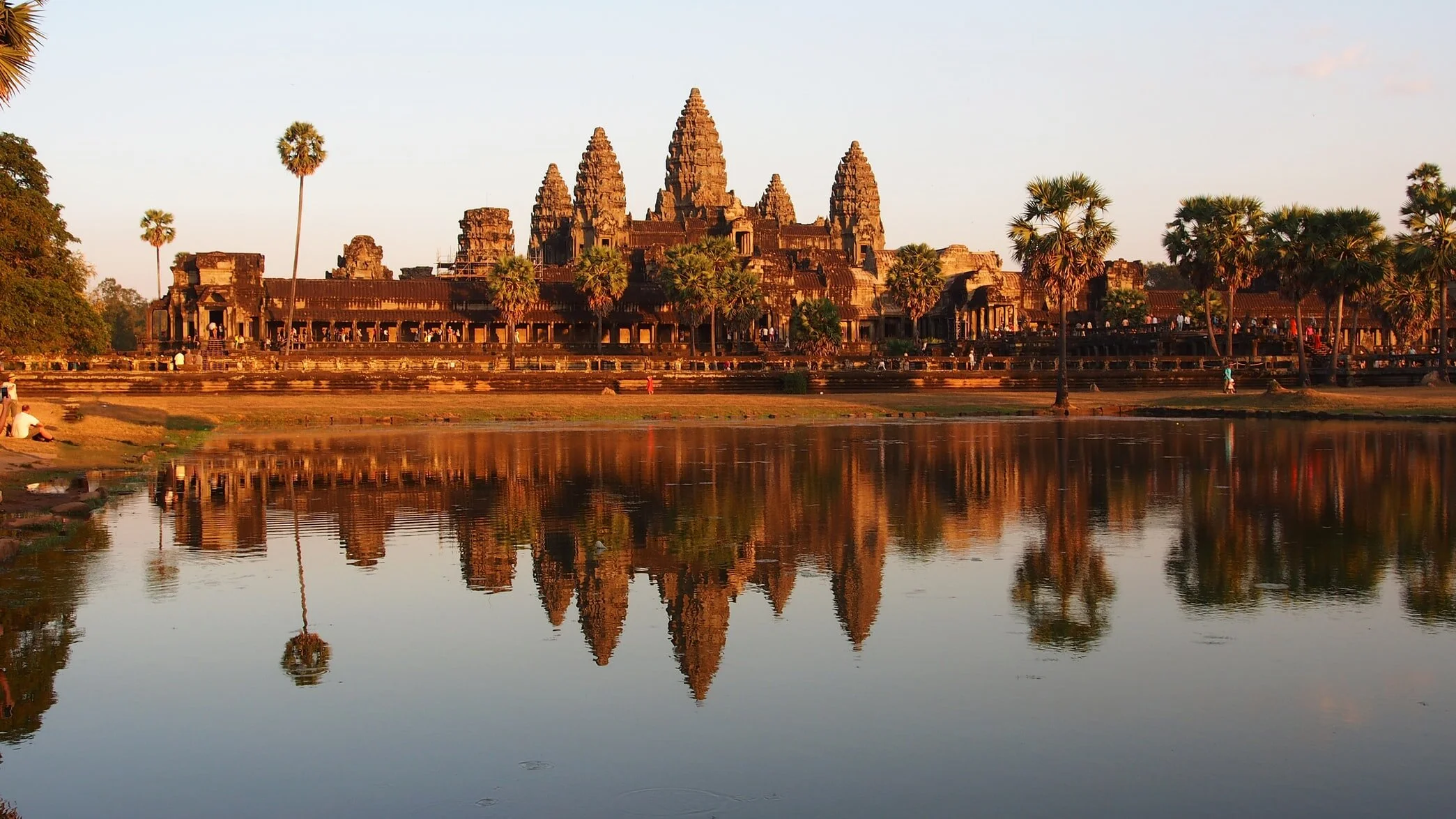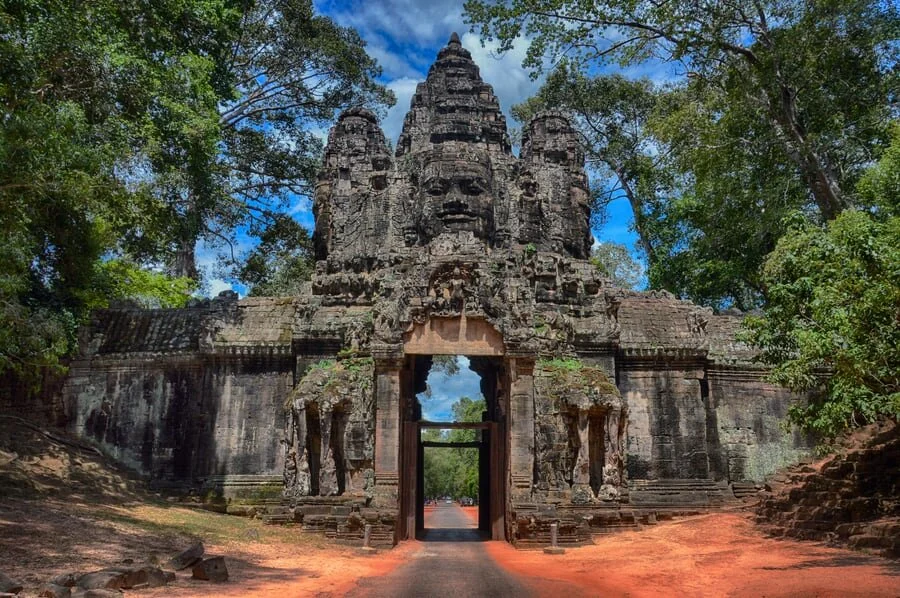Cambodia has long been known for its crown jewel: The Angkor Archaeological complex. Located just outside Siem Reap, Cambodia, Angkor is considered the “crown jewel” of Cambodia. Though there are over 1,000 temples in the Angkor complex, here are our top 5 favorites.
Angkor Wat
If you’ve seen a picture of Angkor, it’s likely of Angkor Wat. Angkor Wat is the largest of all the temples in Cambodia and one of the best preserved. In fact, Angkor Was is the world’s largest religious monument—no small feat! It is surrounded by a moat-like reservoir, creating stunning reflections for photographers, particularly at sunrise and sunset. The lotus-bud towers and ancient carvings are so iconic that many tourists mistakenly refer to the entire complex as the Angkor Wat temples.
Angkor Wat was built during the 12th century and was the capital of the Angkor Empire for centuries. It was initially built as a tribute to the Hindu god Vishnu, a “preserver and protector” god to protect the empire under the reign of King Suryavarman II. During your visit, pay special attention to the intricately-carved pillars and walls within the temple. These carvings tell Hindu epics, including the creation of the universe, the famed “Churning of the Ocean,” and reliefs of asparas (celestial beings).
Though the original temple was a Hindu site, the main religion practiced at Angkor Wat is Buddhism. Remember to keep your shoulders and knees covered while in the grounds and be respectful of ceremonies occurring throughout the day.
Recommended time: 3+ hours
Bayon
Bayon Temple is another must-see temple within the Angkor Temple Complex. Built in the late 12th century, Bayon is defined by the 216 carved faces smiling down from 54 towers. Recently, archeologists discovered that Bayon is the city center for the Angkor Thom region and was likely a popular place of worship for townspeople in centuries past.
Scholars believe that the carved faces are meant to be representative of Avalokitesvara, a Buddhist who reached nirvana and became known as the compassionate bodhisattva. However, most of the faces also bear a resemblance to King Jayavarman, who likely considered himself a divine king within Buddhism.
On your visit, climb both tiers of the temple to get the best view of all the faces. Bonus points if you go at sunset to see the faces in sharp relief!
Recommended Time: 1 hour
Angkor Thom
Angkor Thom is one of the newer temples in the Angkor Archeological Complex. It was built by King Jayavarman VII in the late 12th century and was the last capital of the Khmer Empire. In fact, Angkor Thom means “great city!”
During its heyday, Angkor Thom was home to 1 million people. It features tall city walls, fortified entry gates with carved guardians, and a path guarded by over 100 carved Hindu gods and demons (representing the “Churning of the Ocean” Hindu legend, also depicted at Angkor Wat).
On your visit, enter through the southern entrance and work your way north. Bayon Temple and Angkor Thom are part of the same region, so you can see both in an afternoon!
Recommended Time: 1-2 hours
Ta Prohm
Though Ta Prohm is largely in ruins, it is one of the most wild and photographic temples in the Angkor region. Built between 1186 and 1191 CE, Ta Prohm originally served as a Mahayana Buddhist monastery and university. It fell to ruin sometime in the 15th century after the fall of the Khmer Empire. In the intervening centuries, the jungle began to merge with the infrastructure, giving it a uniquely wild appearance.
Unlike other temples in Angkor, Ta Prohm has not undergone restoration efforts. Angkor scholar Maurice Glaize says that Ta Prohm was left alone because it was “one of the most imposing [temples] and the one which had best merged with the jungle, but not yet to the point of becoming a part of it.” The only restorative efforts done to the temple include wooden walkways, rope railings, and structural supports to protect the temple from further damage.
On your visit, pay special attention to the large silk-cotton tree roots draping over the temple. For bonus points, watch the Lara Croft: Tomb Raider movie beforehand and see if you can spot the real-life filming locations within Ta Prohm!
Banteay Srei
Last but not least is Banteay Srei. Banteay Srei is one of the smaller temples within the Angkor Archeological Complex, but it is often called the “art gallery of Angkor.” It is the only temple that was not built by a king—instead, it was commissioned by a member of the Hindu caste in the 10th century.
Unlike other temples, many of the carvings are built of rose-pink sandstone and depict Hindu gods and goddesses, delicate florals, and epics from Hindu text the Ramayana. Many scholars also believe that the intricate carvings were done by women. Banteay Srei means “citadel of women”
Banteay Srei is located about 30 minutes north of Siem Reap and is a bit of a trek outside the other Angkor Temples. Because of this, the temple is often less crowded and makes for some incredible photographic opportunities.
On your visit, take the extra time to walk among the various statues and take a few selfies!
Recommended Time: 1-2 hours
Passes for the Angkor Archeological Park can be bought in one-day, three-day, and seven-day increments. The park is open from 5:00 AM to 6:00 PM. Learn more here.
Did you know that Acanela Expeditions has a trip to Angkor Wat? Join us in the jungles of Cambodia to explore the legendary Angkor Wat Temples, the grand palaces of Phnom Penh, and the floodplanes of Tonle Sap Lake. Click here to learn more, or send an email to expeditions@acanela.com!
Post written by Maddy Quast





